Abstract
Combinations of certain antibiotics and normal human serum at concentrations at which there was no killing by the agents when used alone were found to be bactericidal for Escherichia coli K-12 cells. This effect was observed with tetracycline, streptomycin (SM), trimethoprim, and ampicillin, but not with chloramphenicol or nalidixic acid. Synergy between SM and human serum was also observed against four of nine smooth strains of E. coli. A plasmid-bearing strain of E. coli K-12 was also killed by combinations of tetracycline or SM plus serum, even though the plasmid conferred resistance to tetracycline and SM. Evidence is presented that the synergy between antibiotics and serum is due to a complement-mediated effect on the bacterial cells that makes the cells more susceptible to the bactericidal effects of the antibiotics.
Full text
PDF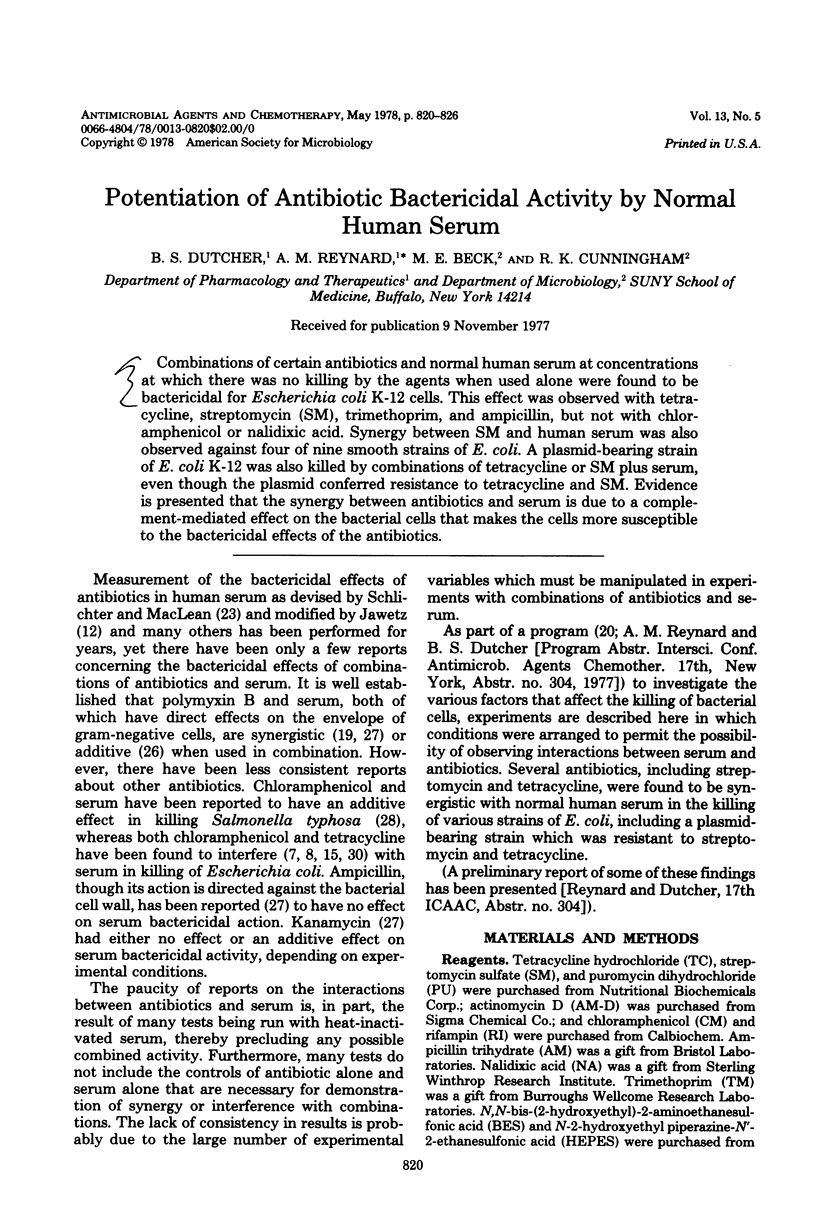
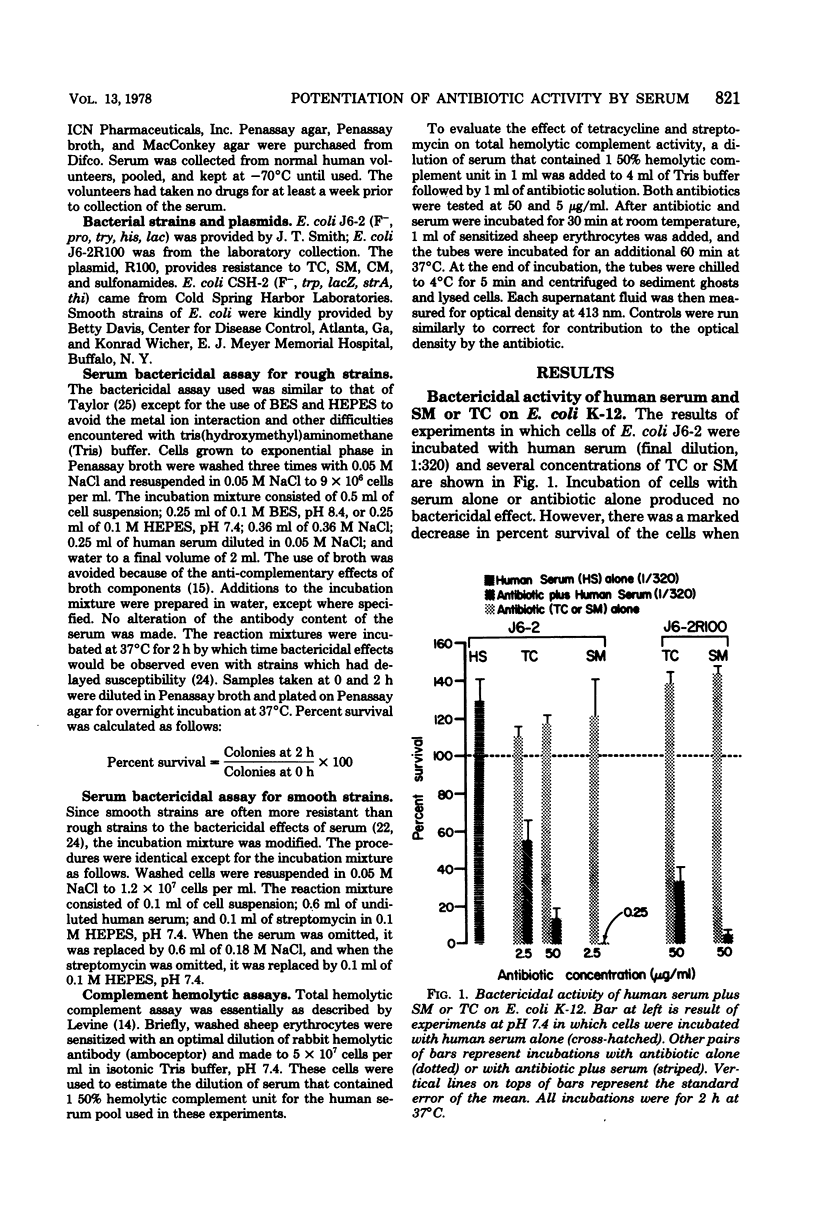
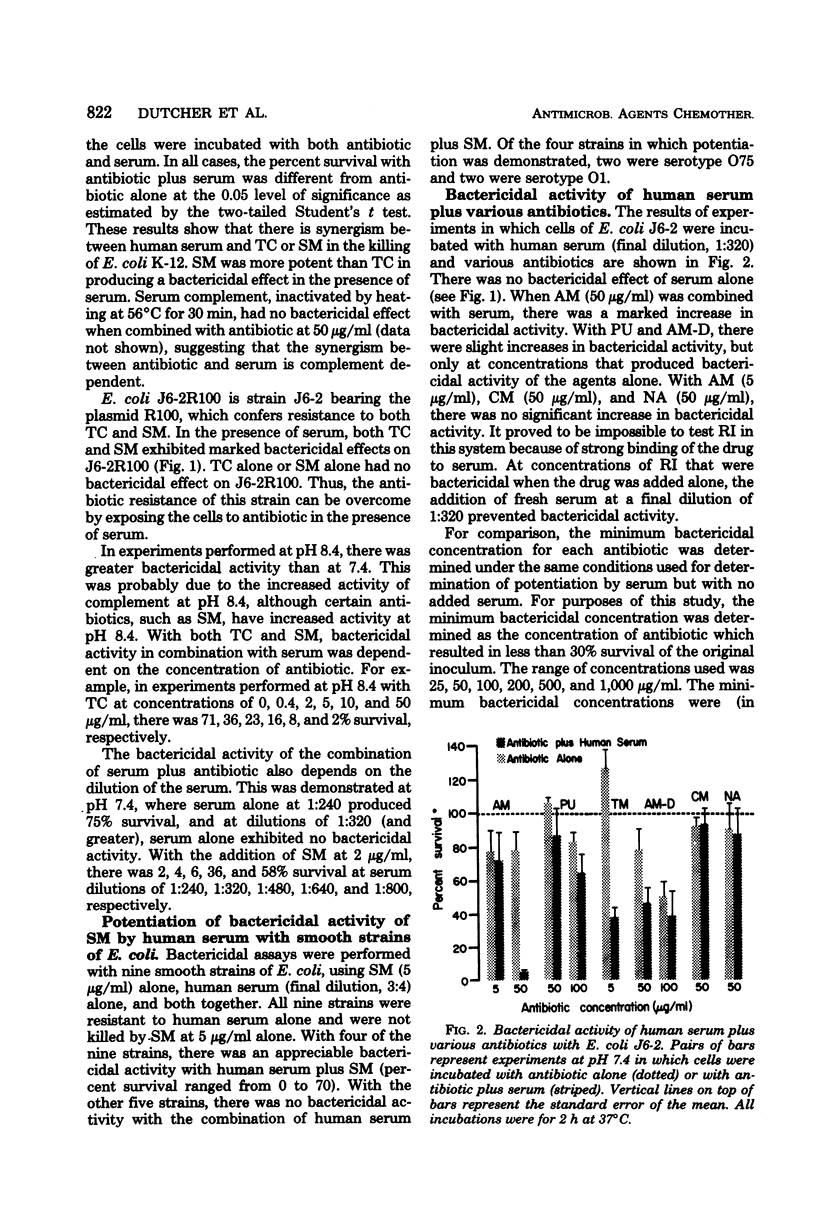
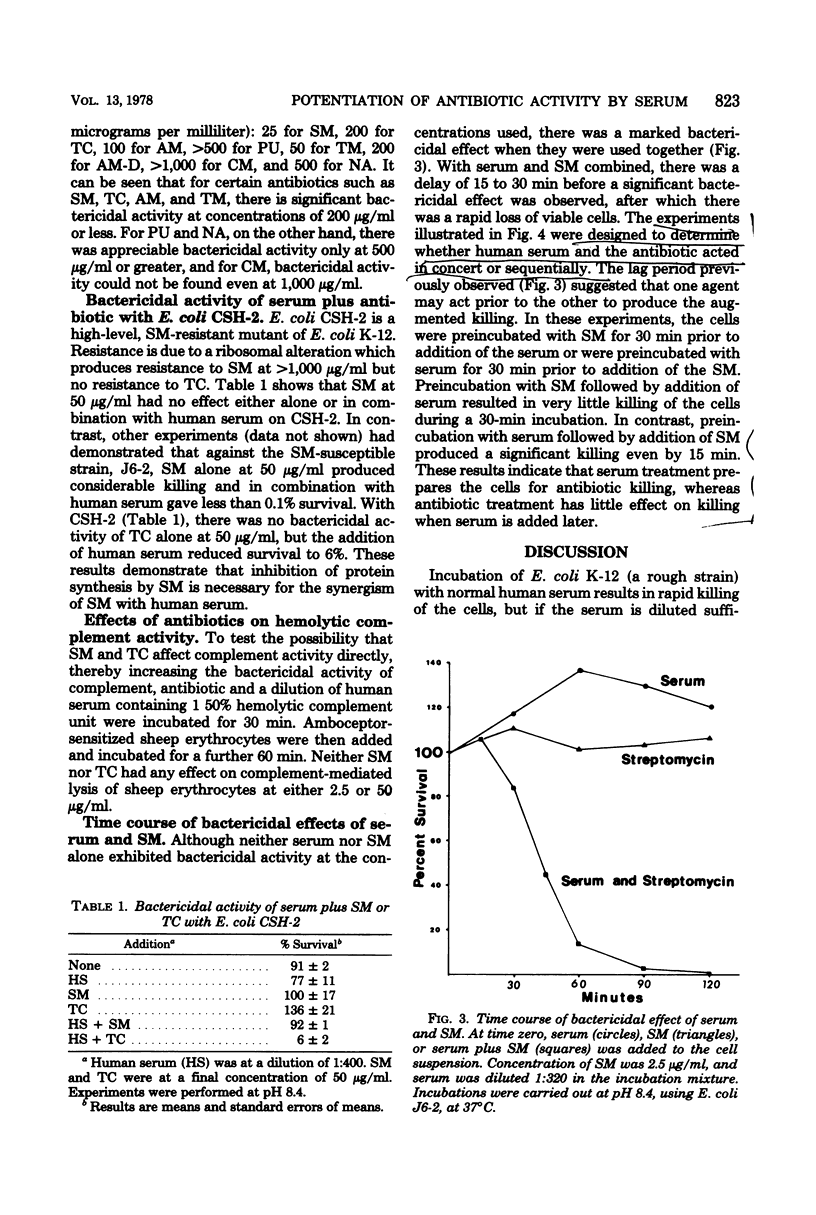
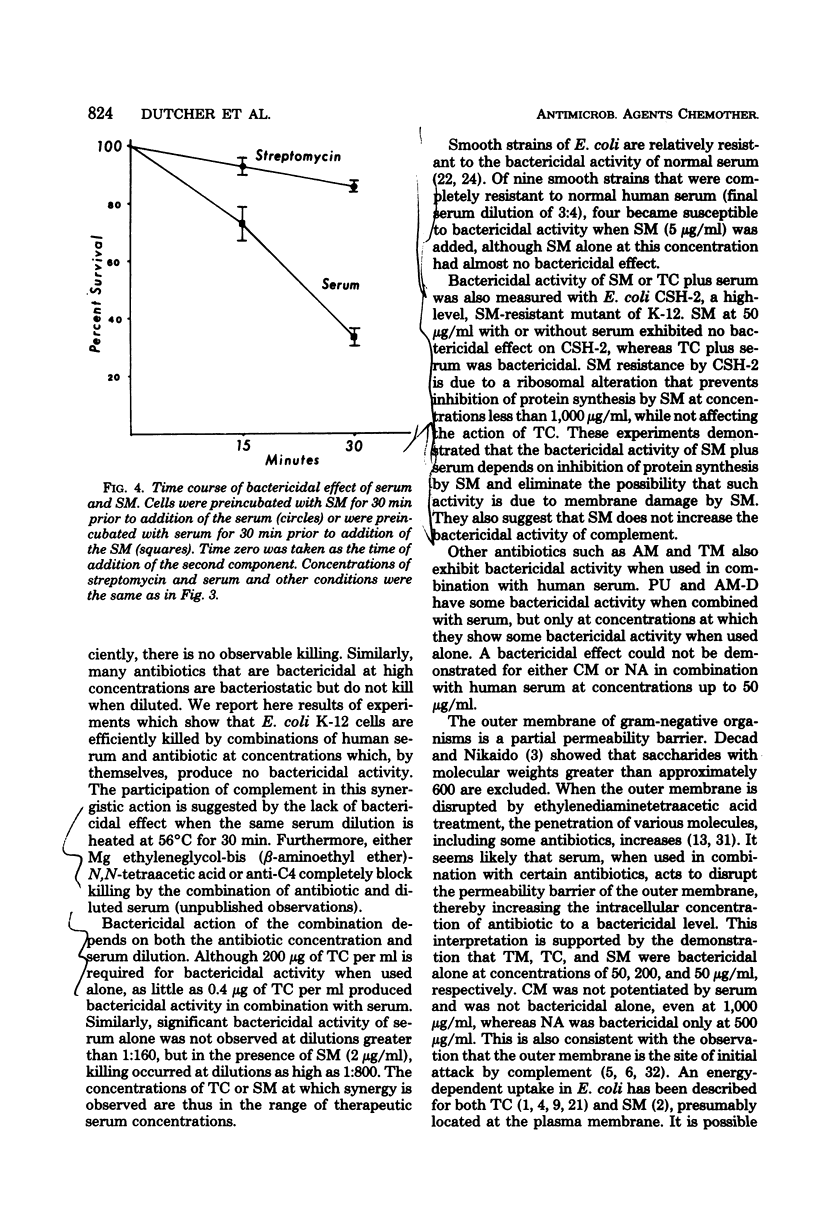
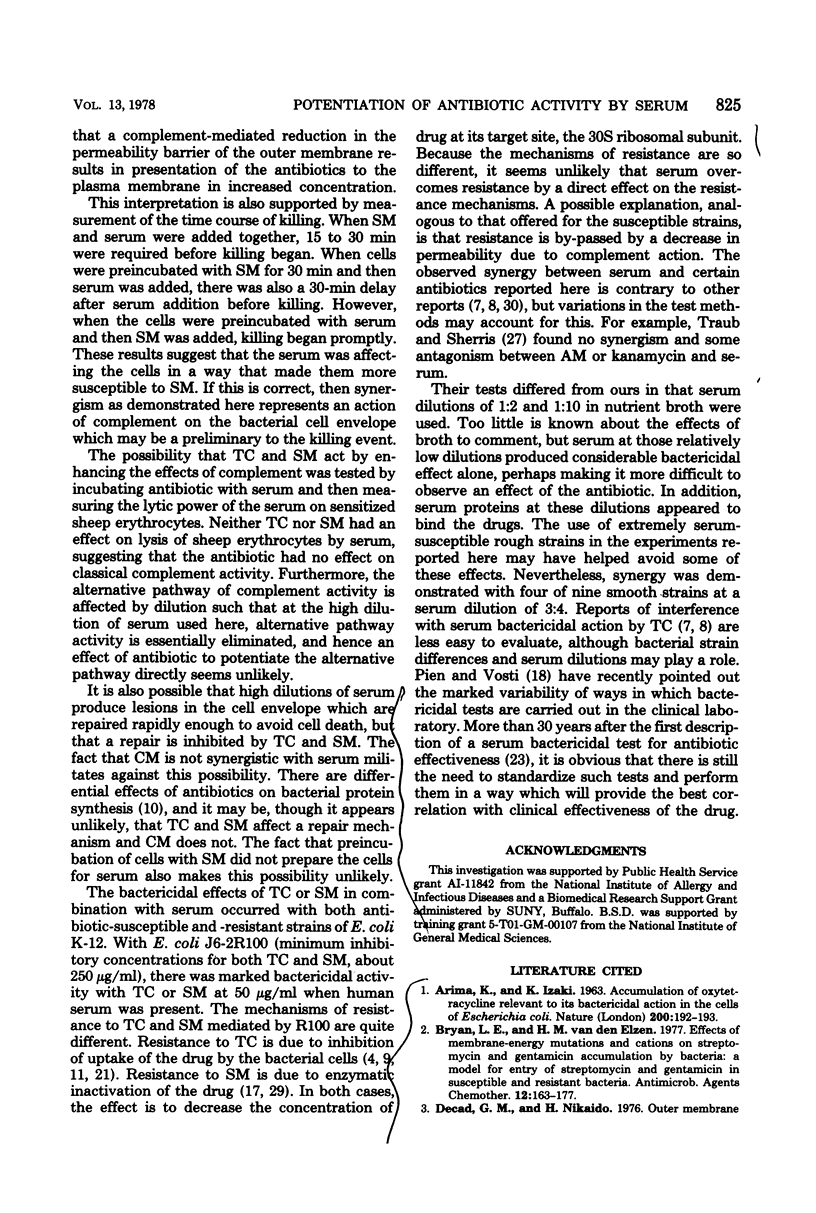
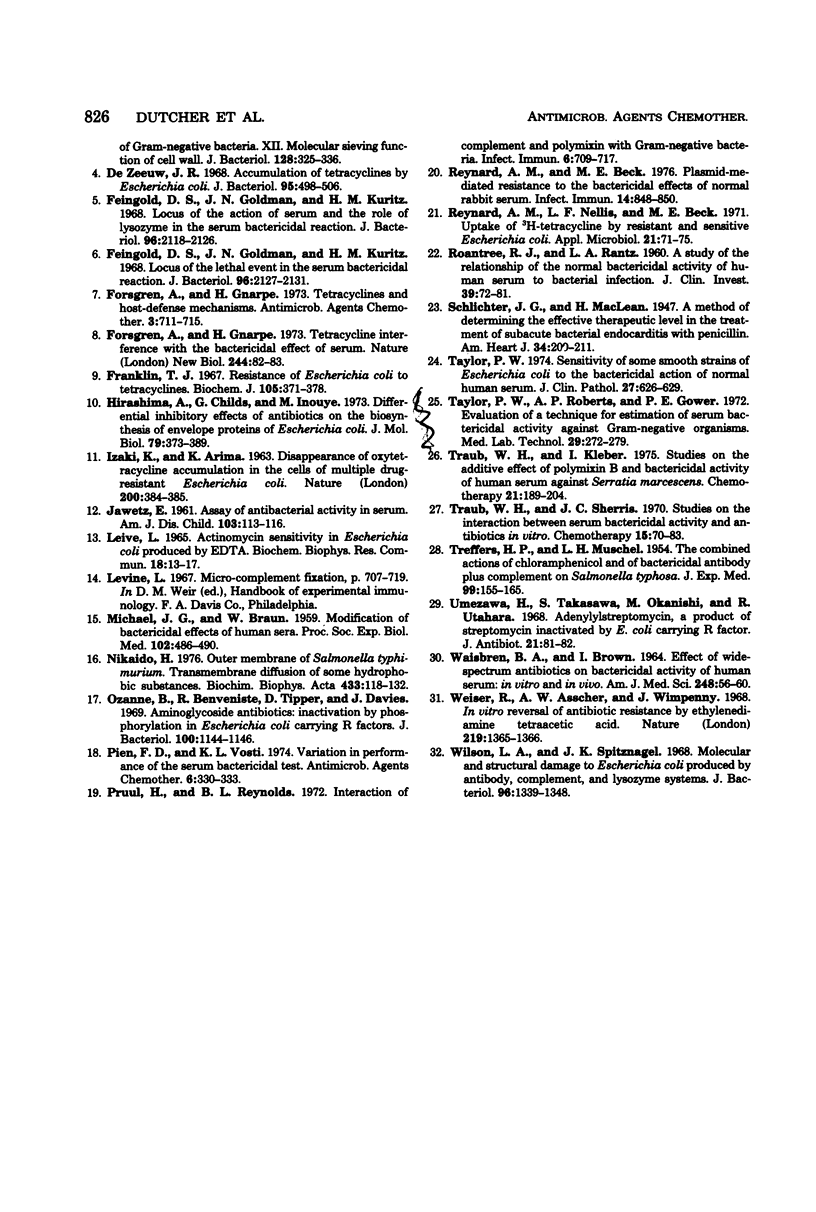
Selected References
These references are in PubMed. This may not be the complete list of references from this article.
- ARIMA K., IZAKI K. ACCUMULATION OF OXYTETRACYCLINE RELEVANT TO ITS BACTERICIDAL ACTION IN THE CELLS OF ESCHERICHIA COLI. Nature. 1963 Oct 12;200:192–193. doi: 10.1038/200192a0. [DOI] [PubMed] [Google Scholar]
- Bryan L. E., Van Den Elzen H. M. Effects of membrane-energy mutations and cations on streptomycin and gentamicin accumulation by bacteria: a model for entry of streptomycin and gentamicin in susceptible and resistant bacteria. Antimicrob Agents Chemother. 1977 Aug;12(2):163–177. doi: 10.1128/aac.12.2.163. [DOI] [PMC free article] [PubMed] [Google Scholar]
- De Zeeuw J. R. Accumulation of tetracyclines by Escherichia coli. J Bacteriol. 1968 Feb;95(2):498–506. doi: 10.1128/jb.95.2.498-506.1968. [DOI] [PMC free article] [PubMed] [Google Scholar]
- Feingold D. S., Goldman J. N., Kuritz H. M. Locus of the action of serum and the role of lysozyme in the serum bactericidal reaction. J Bacteriol. 1968 Dec;96(6):2118–2126. doi: 10.1128/jb.96.6.2118-2126.1968. [DOI] [PMC free article] [PubMed] [Google Scholar]
- Feingold D. S., Goldman J. N., Kuritz H. M. Locus of the lethal event in the serum bactericidal reaction. J Bacteriol. 1968 Dec;96(6):2127–2131. doi: 10.1128/jb.96.6.2127-2131.1968. [DOI] [PMC free article] [PubMed] [Google Scholar]
- Forsgren A., Grarpe H. Tetracyclines and host-defense mechanisms. Antimicrob Agents Chemother. 1973 Jun;3(6):711–715. doi: 10.1128/aac.3.6.711. [DOI] [PMC free article] [PubMed] [Google Scholar]
- IZAKI K., ARIMA K. DISAPPEARANCE OF OXYTETRACYCLINE ACCUMULATION IN THE CELLS OF MULTIPLE DRUG-RESISTANT ESCHERICHIA COLI. Nature. 1963 Oct 26;200:384–385. doi: 10.1038/200384a0. [DOI] [PubMed] [Google Scholar]
- Ozanne B., Benveniste R., Tipper D., Davies J. Aminoglycoside antibiotics: inactivation by phosphorylation in Escherichia coli carrying R factors. J Bacteriol. 1969 Nov;100(2):1144–1146. doi: 10.1128/jb.100.2.1144-1146.1969. [DOI] [PMC free article] [PubMed] [Google Scholar]
- Pien F. D., Vosti K. L. Variation in performance of the serum bactericidal test. Antimicrob Agents Chemother. 1974 Sep;6(3):330–333. doi: 10.1128/aac.6.3.330. [DOI] [PMC free article] [PubMed] [Google Scholar]
- Reynard A. M., Nellis L. F., Beck M. E. Uptake of 3H-Tetracycline by resistant and sensitive Escherichia coli. Appl Microbiol. 1971 Jan;21(1):71–75. doi: 10.1128/am.21.1.71-75.1971. [DOI] [PMC free article] [PubMed] [Google Scholar]
- TREFFERS H. P., MUSCHEL L. H. The combined actions of chloramphenicol and of bactericidal antibody plus complement on Salmonella typhosa. J Exp Med. 1954 Feb;99(2):155–165. doi: 10.1084/jem.99.2.155. [DOI] [PMC free article] [PubMed] [Google Scholar]
- Taylor P. W., Roberts A. P., Gower P. E. Evaluation of a technique for the estimation of serum bactericidal activity against Gram-negative organisms. Med Lab Technol. 1972 Jul;29(3):272–279. [PubMed] [Google Scholar]
- Umezawa H., Takasawa S., Okanishi M., Utahara R. Adenylylstreptomycin, a product of streptomycin inactivated by E. coli carrying R factor. J Antibiot (Tokyo) 1968 Jan;21(1):81–82. doi: 10.7164/antibiotics.21.81. [DOI] [PubMed] [Google Scholar]
- WAISBREN B. A., BROWN I. EFFECT OF WIDE-SPECTRUM ANTIBIOTICS ON BACTERICIDAL ACTIVITY OF HUMAN SERUM: IN VITRO AND IN VIVO. Am J Med Sci. 1964 Jul;248:56–60. doi: 10.1097/00000441-196407000-00009. [DOI] [PubMed] [Google Scholar]


